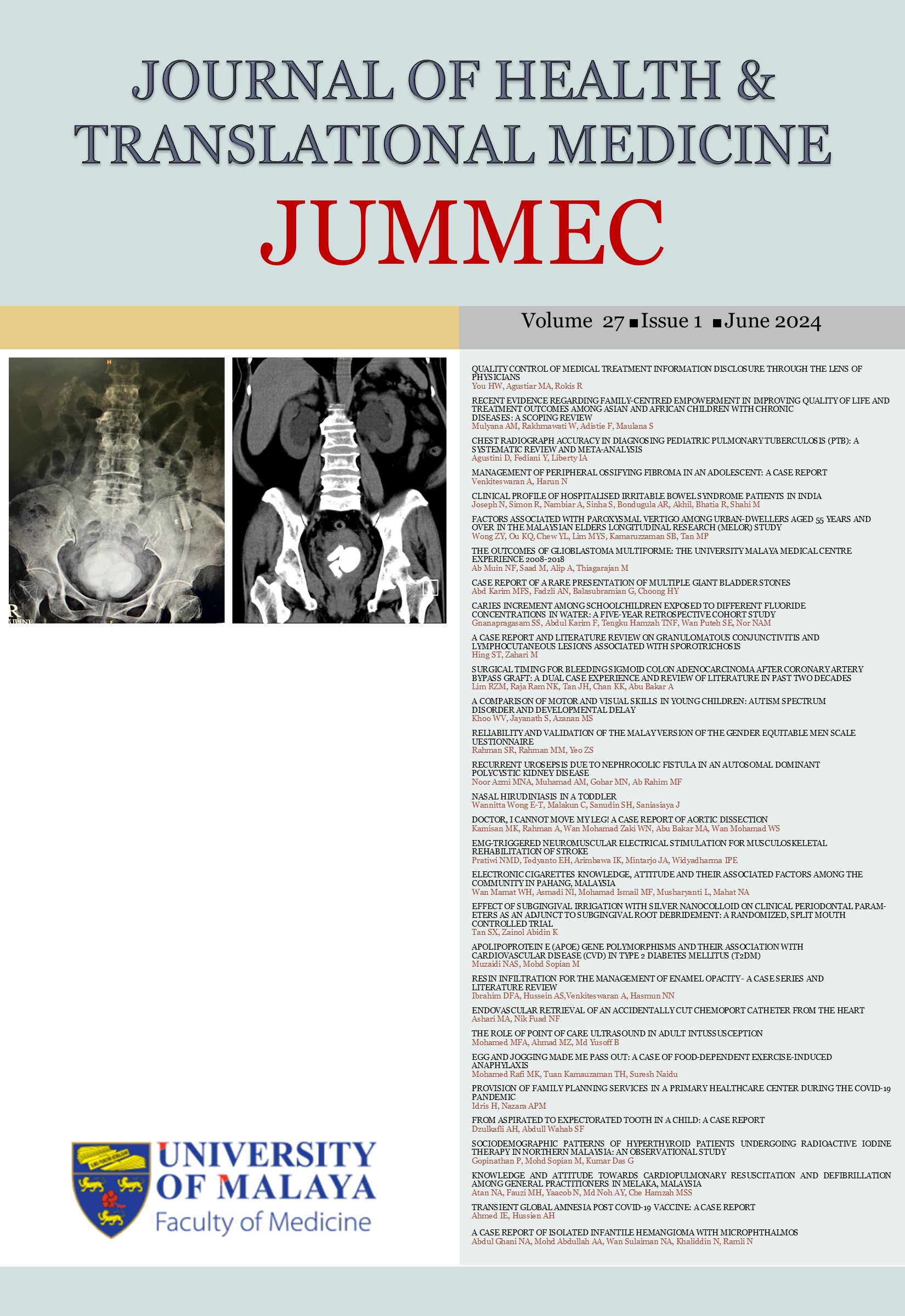EMG-TRIGGERED NEUROMUSCULAR ELECTRICAL STIMULATION FOR MUSCULOSKELETAL REHABILITATION OF STROKE
Received 2022-08-15; Accepted 2023-06-12; Published 2024-01-11
DOI:
https://doi.org/10.22452/jummec.vol27no1.17Keywords:
electromyography, EMG-triggered, musculoskeletal rehabilitation, neuromuscular electrical stimulation, stroke, electromyography, EMG-triggered, musculoskeletal rehabilitation, neuromuscular electrical stimulation, strokeAbstract
A decline in stroke-related mortality has led to an increased prevalence of post-stroke complications, globally. One of the most significant clinical effects of stroke are musculoskeletal problems. Musculoskeletal issues are typically induced by hemiplegia and they occur on the affected side. They also may not appear for weeks or months after a stroke. The most frequent musculoskeletal complications of stroke include motor loss, spasticity, shoulder discomfort, and wrist flexion contracture. Neuromuscular electrical stimulation (NMES) is a rehabilitation technique advised for stroke patients. NMES contracts muscles innervated by an external electrical stimulus, with or without patient participation (active or passive). There is evidence that NMES can strengthen muscles, reduce spasticity, increase corticospinal neural circuit excitability, and improve neuroplasticity. Electromyogram (EMG)-triggered NMES is a device that identifies subtle electrical EMG signals that remain discernible in paralyzed muscles after a stroke and utilizes these signals to trigger electrical stimulation impulses to the same paralyzed muscles, resulting in muscle movement. A study found that EMG-triggered NMES was superior to cyclic-NMES for increasing wrist extension and grip strength following the intervention.
Downloads
Downloads
Published
Issue
Section
License
All authors agree that the article, if editorially accepted for publication, shall be licensed under the Creative Commons Attribution License 4.0 to allow others to freely access, copy and use research provided the author is correctly attributed, unless otherwise stated. All articles are available online without charge or other barriers to access. However, anyone wishing to reproduce large quantities of an article (250+) should inform the publisher. Any opinion expressed in the articles are those of the authors and do not reflect that of the University of Malaya, 50603 Kuala Lumpur, Malaysia.


